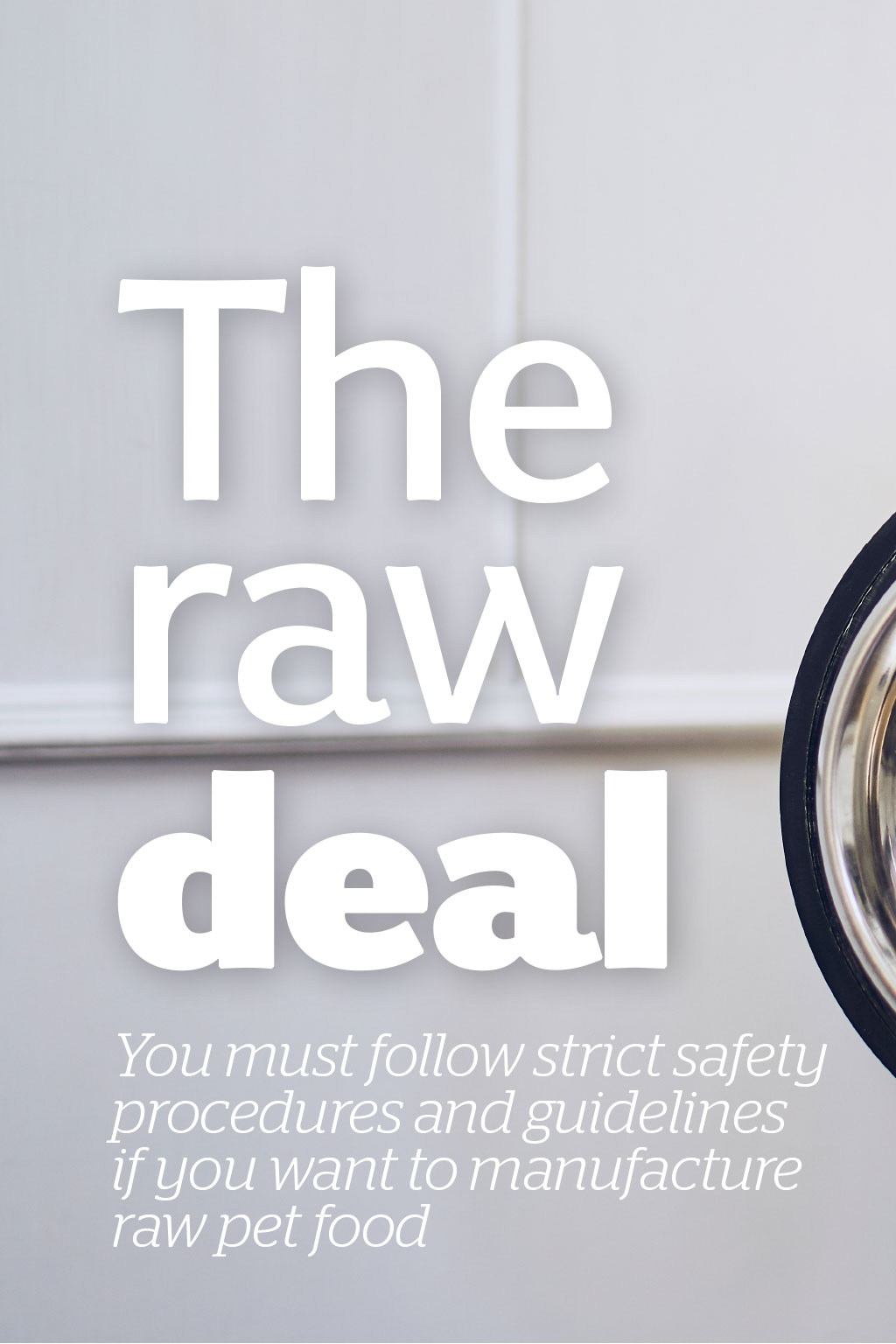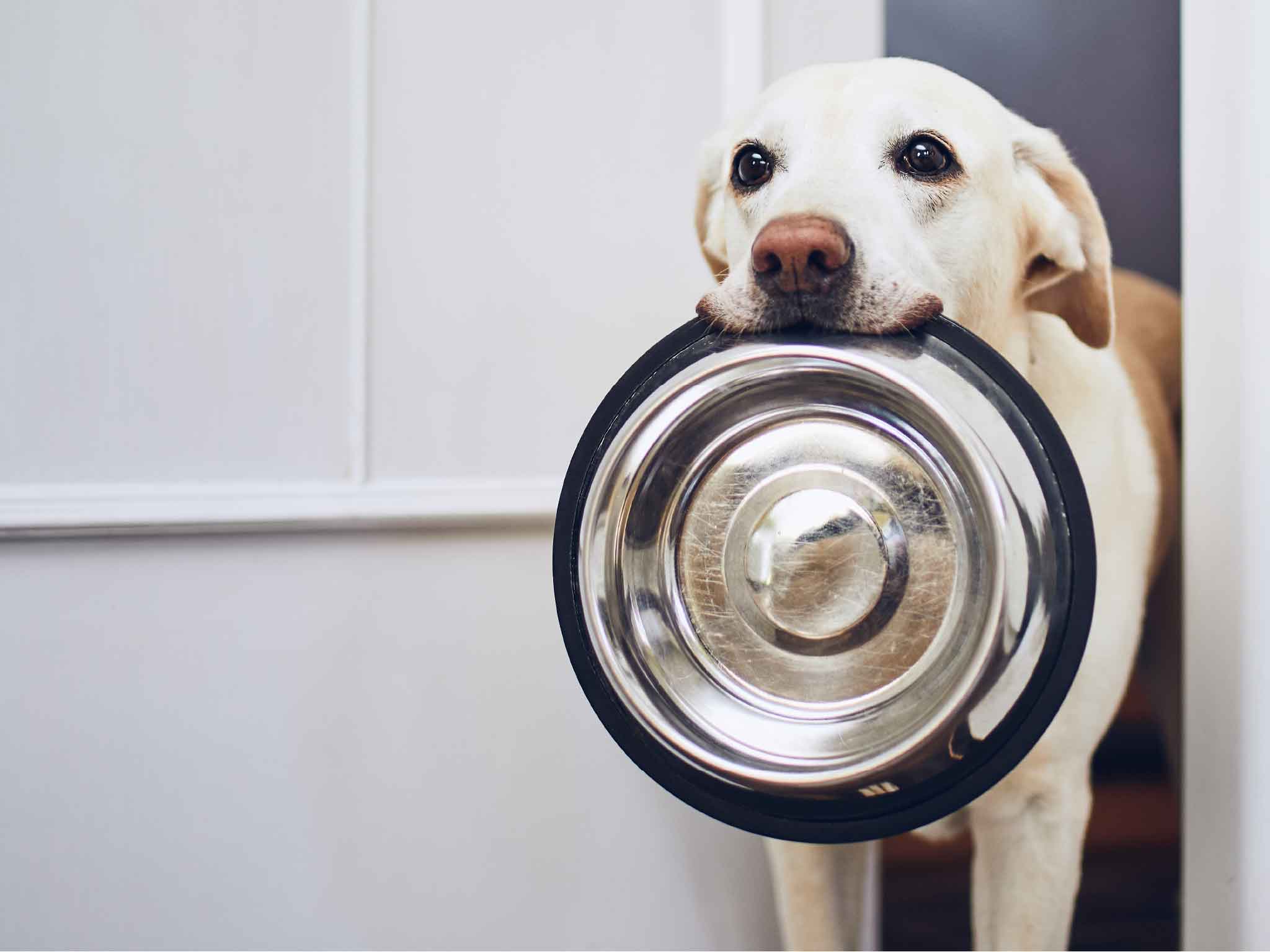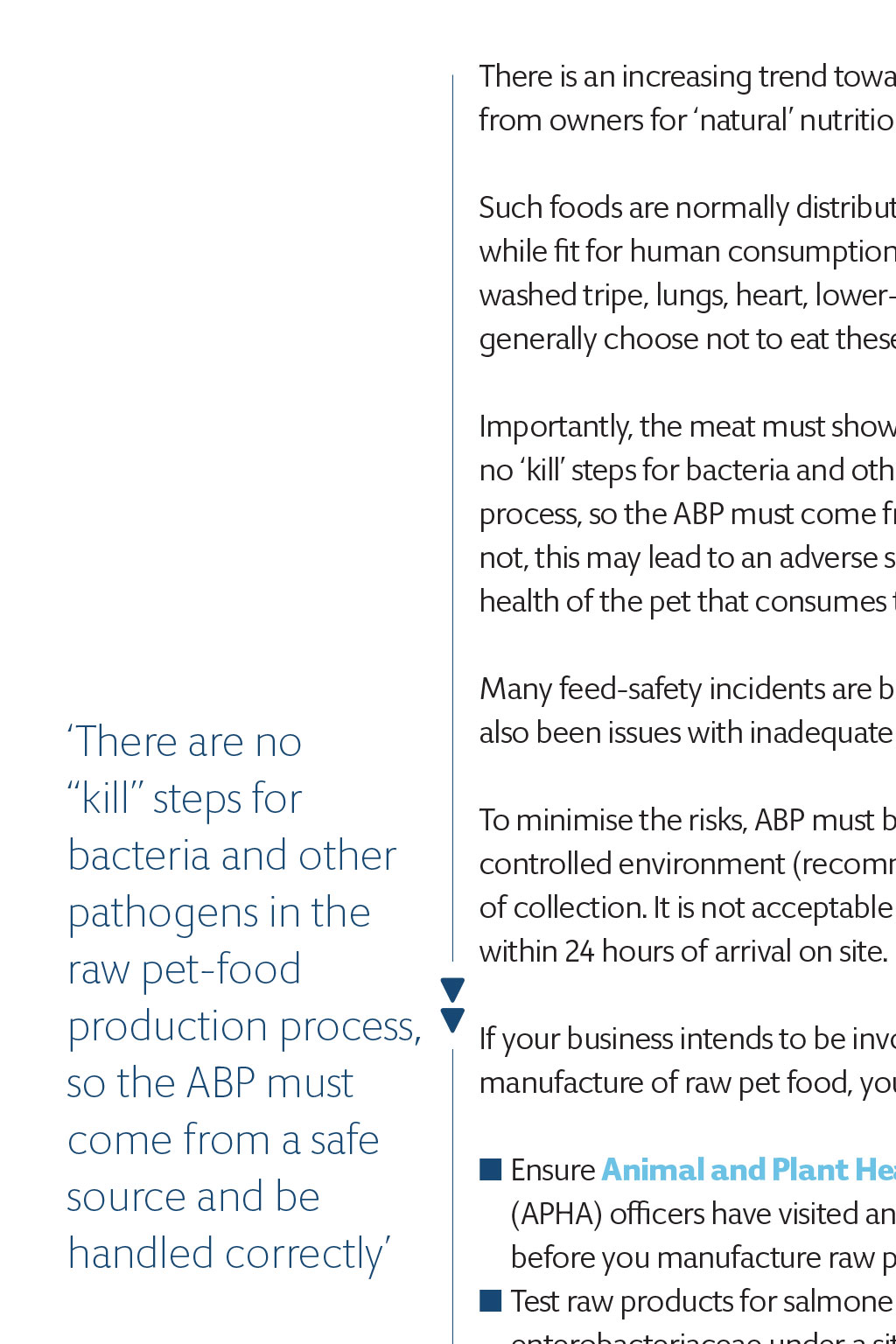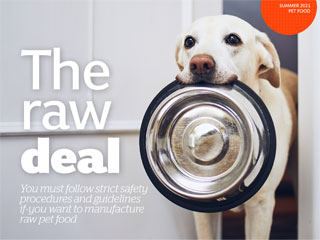














SUMMER 2021 PET FOOD You must follow strict safety procedures and guidelines if you want to manufacture raw pet food There is an increasing trend towards producing raw pet food to satisfy demand from owners for natural nutrition for their pets. Such foods are normally distributed frozen and are made from ingredients that, while fit for human consumption, are not used for this purpose for example, washed tripe, lungs, heart, lower-grade meats and chicken carcasses. People generally choose not to eat these lower-risk, category 3 animal by products (ABP). Importantly, the meat must show no sign of communicable disease. There are no kill steps for bacteria and other pathogens in the raw pet-food production process, so the ABP must come from a safe source and be handled correctly. If it is not, this may lead to an adverse safety impact on the pet food and, ultimately, the health of the pet that consumes the product, as well as the person handling it. There are no kill steps for bacteria and other pathogens in the raw pet-food production process, so the ABP must come from a safe source and be handled correctly Credit: Jeanette English, Trading Standards Officer Image: iStock / Chalabala / Barcin Many feed-safety incidents are because of poor hygiene practices, but there have also been issues with inadequate labelling, including misleading and false claims. To minimise the risks, ABP must be identified for transport, held in a temperaturecontrolled environment (recommended 5C), and be processed within 24 hours of collection. It is not acceptable for the processing to be undertaken within 24 hours of arrival on site. If your business intends to be involved in the manufacture of raw pet food, you must: nEnsure Animal and Plant Health Agency (APHA) officers have visited and approved your site before you manufacture raw pet food using ABP nTest raw products for salmonella and enterobacteriaceae under a site-specific sampling protocol agreed with the APHA nRegister with your local authority, which is responsible for enforcing feed law nManufacture in suitable buildings, with good lighting, drainage, clean water and pest control in place nUse clean and well-maintained equipment nHave written procedures for all stages of production, and systems that minimise hazards and contamination; these will form part of your hazard analysis and critical control points (HACCP) plan nSample finished products and, where relevant, test for microbiological contamination nStore all samples in a suitable place to maintain their condition nKeep records to support your HACCP plan and for traceability, to enable any complaints to be followed up and, if necessary, pet food to be withdrawn. For further information, read the Pet Food Manufacturers Association Guidelines, as well as its factsheets on labelling and raw feeding, and the European Pet Food Industrys Guide to Good Practice. You can also contact your local authority for specific advice about your business. For further information, please contact your local Trading Standards Service